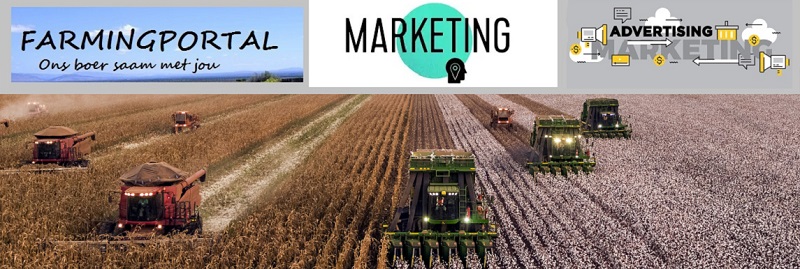The integration of artificial intelligence (AI) into precision farming is transforming agriculture, offering tools to enhance efficiency while aligning with sustainable agriculture practices. However, as the provided article highlights, the tension between AI-driven solutions and traditional farming instincts raises questions about balancing technology with human expertise for sustainable outcomes.AI in Precision Farming AI-powered precision farming leverages data analytics, sensors, and automation to optimize agricultural processes. Key applications include:
- Crop Monitoring and Yield Prediction: AI tools like Farm-ng and Agrio use satellite imagery, drones, and smartphone-based diagnostics to monitor crop health, predict yields, and detect issues like pest infestations or nutrient deficiencies. A 2023 USDA report noted that 68% of U.S. farmers under 35 use such tools, reflecting their growing adoption.
- Resource Optimization: AI-driven irrigation systems, such as those using soil moisture sensors, reduce water usage by up to 30%, per studies cited in the article. Similarly, AI optimizes fertilizer and pesticide application, minimizing waste and environmental impact.
- Predictive Analytics: Machine learning models analyze weather patterns, soil data, and historical trends to forecast optimal planting or harvesting times. However, as the article points out, these models rely on historical data, which may not account for unpredictable weather events or localized conditions.
Despite these benefits, over-reliance on AI risks disconnecting farmers from their land’s nuances. The article cites a 2024 Nature Agriculture study showing that farmers exclusively using AI were 15% less adaptable to unexpected challenges compared to those combining tech with traditional methods. This underscores the need for human intuition to complement AI’s precision.
 VIEWPOINT- Trusts — The Ugly, the Bad and the Good
VIEWPOINT- Trusts — The Ugly, the Bad and the Good
AI and Sustainable Agriculture PracticesAI’s role in precision farming directly supports sustainable agriculture by reducing resource waste and environmental harm. Key contributions include:
- Water Conservation: AI irrigation systems, like those developed by companies such as CropX, use real-time soil and weather data to deliver precise water amounts, cutting usage significantly. This aligns with sustainable water management goals, critical as global water scarcity affects 40% of the world’s population (UN Water, 2024).
- Reduced Chemical Use: AI tools optimize pesticide and fertilizer application, reducing runoff into water systems. For example, Blue River Technology’s AI-driven sprayers target weeds with precision, cutting herbicide use by up to 90% in some cases.
- Soil Health Management: AI platforms analyze soil data to recommend crop rotations or cover crops, enhancing soil fertility and reducing erosion. This supports long-term sustainability by maintaining arable land quality.
- Carbon Footprint Reduction: By optimizing machinery use (e.g., autonomous tractors) and minimizing inputs, AI lowers greenhouse gas emissions. A 2024 FAO report estimated that precision farming could reduce agriculture’s carbon footprint by 10-15% with widespread adoption.
While AI enhances sustainability, the article highlights risks of over-dependence. Farmers relying solely on AI may lose critical skills, like reading subtle signs in plant color or soil texture, which are vital when algorithms fail to account for nature’s unpredictability. Additionally, sustainable practices require local knowledge—AI models trained on generalized data may overlook regional ecological nuances.Moreover, the accessibility of AI tools raises equity concerns. High costs of advanced systems may exclude smallholder farmers, particularly in developing regions, potentially widening agricultural disparities. Sustainable agriculture demands inclusive solutions that ensure all farmers can benefit from technology.
Farmers should use AI as a tool to enhance, not replace, their expertise. For instance, AI can flag potential pest issues, but a farmer’s experience determines the best response based on local conditions. Training programs can help young farmers blend tech proficiency with traditional skills, ensuring adaptability.Sustainable agriculture also benefits from this balance. AI can drive efficiency and reduce environmental impact, but human oversight ensures practices align with local ecosystems and long-term land stewardship. Community-driven initiatives, like farmer cooperatives sharing AI tools, can further democratize access while fostering knowledge exchange.
AI in precision farming is a powerful ally for sustainable agriculture, offering tools to conserve resources, reduce emissions, and boost productivity. AI it’s not a panacea. Farmers must integrate AI with their instincts and local knowledge to navigate nature’s unpredictability and ensure sustainable outcomes. By treating AI as a partner rather than a replacement, agriculture can achieve a future where technology and tradition work in harmony to feed the world responsibly.
Message- If you a real farmer- knowing your farm and the nature- you do not GRAP your Smartphone every time you want to make a "Discission" never underestimate yourself- and if you are a young farmer- trusting your Smartphone and your AI - never underestimate the power and knowledge of farmers with years of experience- not the AI.

DISCLAIMER
The views and opinions expressed in this program are those of the writers and do not necessarily reflect the views or positions of any entities they represent. The information contained in this website is for general information purposes only. The information is provided by CRA and while we endeavour to keep the information up to date and correct, we make no representations or warranties of any kind, express or implied, about the completeness, accuracy, reliability, suitability or availability with respect to the website or the information, products, services, or related graphics contained on the website for any purpose. Any reliance you place on such information is therefore strictly at your own risk.

 VIEWPOINT- Trusts — The Ugly, the Bad and the Good
VIEWPOINT- Trusts — The Ugly, the Bad and the Good















